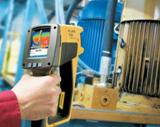Energy audit: a way to improve production efficiency
 Every production process, regardless of the type of product being created, is based on the consumption of different types of fuels and energy resources. Moreover, we are talking not only and not even so directly about energy carriers (liquid, solid or gaseous fuels), but about water supply, heat supply and, of course, electricity provided with their help.
Every production process, regardless of the type of product being created, is based on the consumption of different types of fuels and energy resources. Moreover, we are talking not only and not even so directly about energy carriers (liquid, solid or gaseous fuels), but about water supply, heat supply and, of course, electricity provided with their help.
Energy costs constitute a significant part of the budget of any enterprise, and there are invariably reserves for their reduction. An energy survey, otherwise called an energy audit, helps identify such opportunities. Practice convincingly confirms that even in enterprises with a sufficiently high level of energy efficiency there is always a significant potential for introducing energy-saving technologies. Thanks to its application, it is possible to achieve significant savings of funds and resources, which increase many times when solving the problem on a national scale.
Procedure and rules for performing an energy audit
Energy audits can be performed by both legal entities and individuals (or individual entrepreneurs) who have the necessary qualification level and are members of the relevant SRO. The process itself consists of several stages:
-
In advance.
-
Organizational.
-
Introductory and informative.
-
The stage of instrumental research and measurements using special equipment.
-
Summary and careful analysis of the collected information.
-
Determination of directions and possibilities for minimizing electricity losses.
-
Acquaintance of responsible persons with the energy audit report and the relevant recommendations for improving the efficiency of energy use.
-
Compilation and issuance of an energy-saving passport for the investigated building.
One important component of energy research is lighting design—the study, analysis, and evaluation of design solutions for projects under construction or existing lighting systems. At the same time, considerable attention is paid to all components, as it is unacceptable to introduce energy-efficient solutions to the detriment of illuminance standards and the quality of light flow.
In most cases, the set of measures recommended in the report provided by the specialists who performed the audit of the lighting systems envisages the widespread introduction of LED lighting devices. These progressive examples of lighting technologies fully meet the strictest modern standards and requirements for efficiency, reliability and environmental friendliness.
